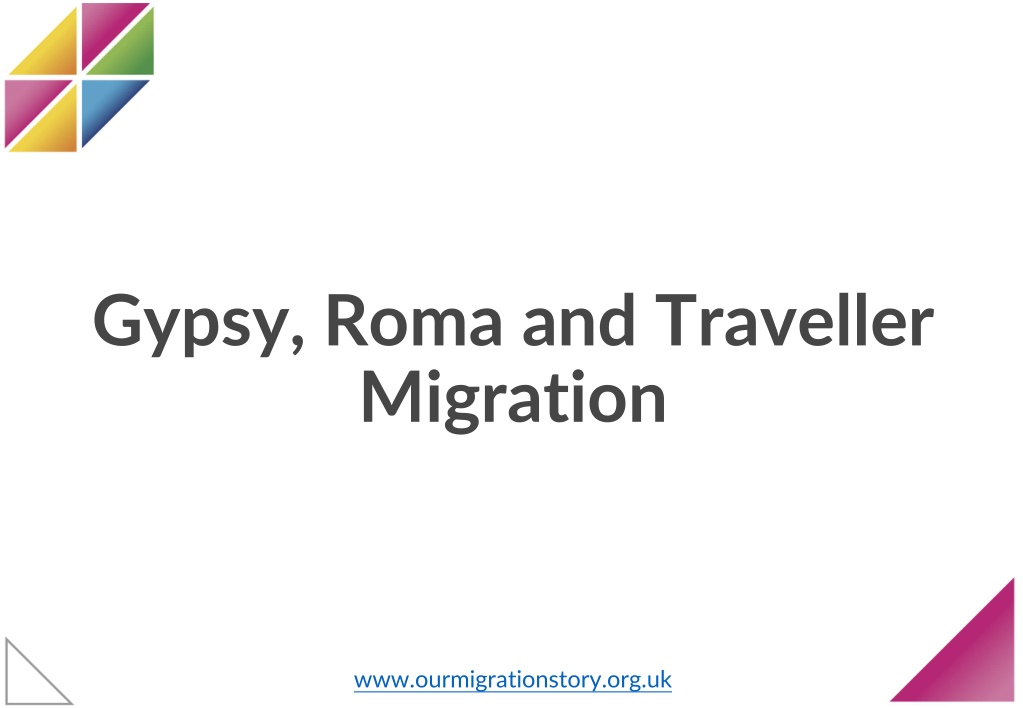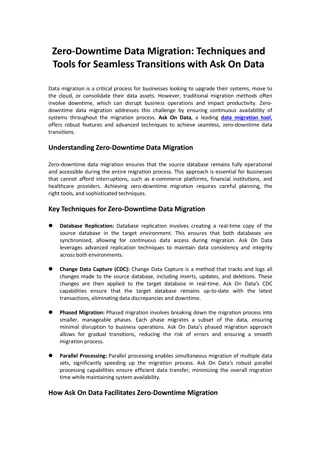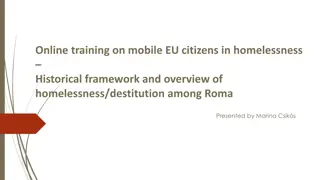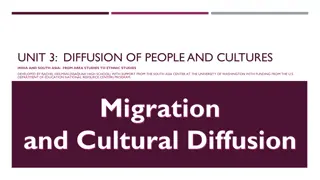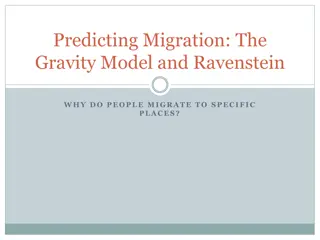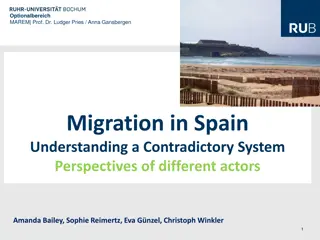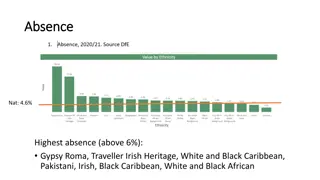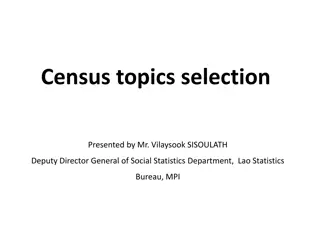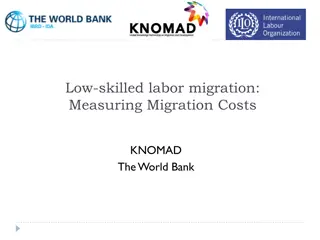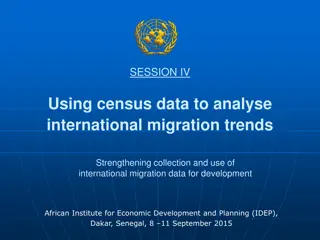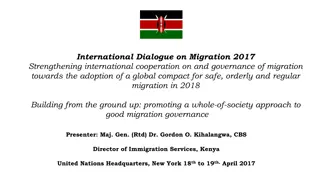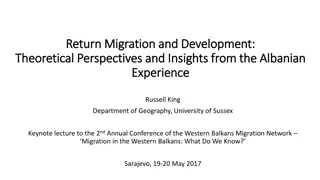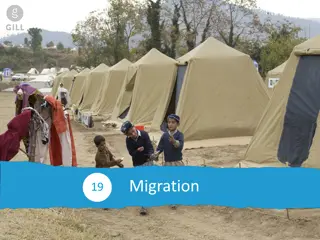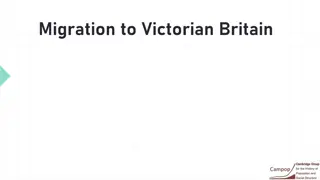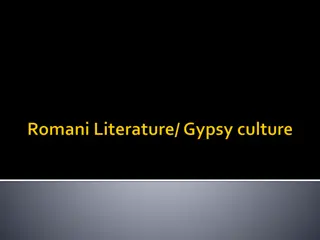Understanding Gypsy, Roma, and Traveller Migration in Britain
Exploring the history of Gypsy, Roma, and Traveller communities in Britain, including discriminatory laws like the Egyptians Act of 1530. Learn about their migration, challenges faced, and historical context through informative resources and discussions on ourmigrationstory.org.uk.
Download Presentation

Please find below an Image/Link to download the presentation.
The content on the website is provided AS IS for your information and personal use only. It may not be sold, licensed, or shared on other websites without obtaining consent from the author. Download presentation by click this link. If you encounter any issues during the download, it is possible that the publisher has removed the file from their server.
E N D
Presentation Transcript
Gypsy, Roma and Traveller Migration www.ourmigrationstory.org.uk
Gypsy, Roman and Traveller Migration Starter task Lesson Objectives To know when and how Gypsy and Roma people came to Western Europe To explore an early example of discrimination towards Gypsies in Britain To investigate Gypsy, Roma and Traveller History Month and produce an assembly to raise awareness of it at your school Discuss the terms above with the person next to you what do you understand them to mean? Remember to be respectful & factual and don t be afraid to say you do not know what they mean. If you do not know what they mean, what questions do you have about these terms? www.ourmigrationstory.org.uk
How did Gypsy, Roma and Traveller communities come to Britain? https://www.youtube.com/watch?v=Q6wSLfGBVGY www.ourmigrationstory.org.uk
The Egyptians Act, 1530 (Courtesy of The National Archives) The Egyptians Act 1530 was passed to expel people calling themselves Egyptians (hence gypsies ), and was not repealed until 1840. a diverse and foreign people, calling themselves Egyptians, using no craft nor evidence of selling goods, who have come into this realm, and gone from shire to shire, and place to place, in great company; and used great subtlety and crafty means to deceive the people and persuading them that they, by palmistry, could tell men's and women's fortunes; and so, many times, by craft and subtlety, have deceived the people for their money; and also have committed many heinous felonies and robberies, to the great hurt and deceit of the people that they move among... the Egyptians who are now in this realm, have to depart within sixteen days.... and from now no Egyptians may enter the King's realm and if they do, then they with all their possessions, shall forfeit to the King our Sovereign Lord all their goods and titles and then must leave the realm within fifteen days under pain of imprisonment. www.ourmigrationstory.org.uk
The Egyptians Act, 1530 (Courtesy of The National Archives) Questions: 1. List 3 things the Egyptians are accused of doing that seem to have upset the authorities. 2. How many days did the Egyptians have to leave England? 3. What would happen to any Egyptians who came into the country after this law had been passed? a diverse and foreign people, calling themselves Egyptians, using no craft nor evidence of selling goods, who have come into this realm, and gone from shire to shire, and place to place, in great company; and used great subtlety and crafty means to deceive the people and persuading them that they, by palmistry, could tell men's and women's fortunes; and so, many times, by craft and subtlety, have deceived the people for their money; and also have committed many heinous felonies and robberies, to the great hurt and deceit of the people that they move among... the Egyptians who are now in this realm, have to depart within sixteen days.... and from now no Egyptians may enter the King's realm and if they do, then they with all their possessions, shall forfeit to the King our Sovereign Lord all their goods and titles and then must leave the realm within fifteen days under pain of imprisonment. www.ourmigrationstory.org.uk
Gypsy, Roma and Traveller History Month June each year Your task is to research Gypsy, Roma and Traveller History Month (GRTHM) and to produce an assembly raising awareness of the event and GRT history in your school. Your teacher will provide you with some useful links. Your assembly could be structured as follows: A first section introducing the audience to who Gypsy, Roma and Travellers are and briefly outlining their history in Britain A section identifying some of the prejudices and discrimination faced by these communities perhaps with some myths and truths included A section on GRTHM and the kinds of events that take place www.ourmigrationstory.org.uk
Useful links http://grthm.natt.org.uk/whatis.php - What is GRTHM? http://grthm.natt.org.uk/history-culture.php - history & culture http://grthm.natt.org.uk/brief-history.php - brief history http://grthm.natt.org.uk/timeline.php - timeline http://grthm.natt.org.uk/myths-and-truths.php - myths and truths http://www.grthmlondon.org.uk/2017/02/08/gypsy-roma-traveller-history-month- celebration-2017/ - Information about GRTHM 2017 http://www.grthmlondon.org.uk/grthm/promoting-gypsy-roma-traveller-history- month-in-your-school/ - ideas for publicising GRTHM in your school www.ourmigrationstory.org.uk
